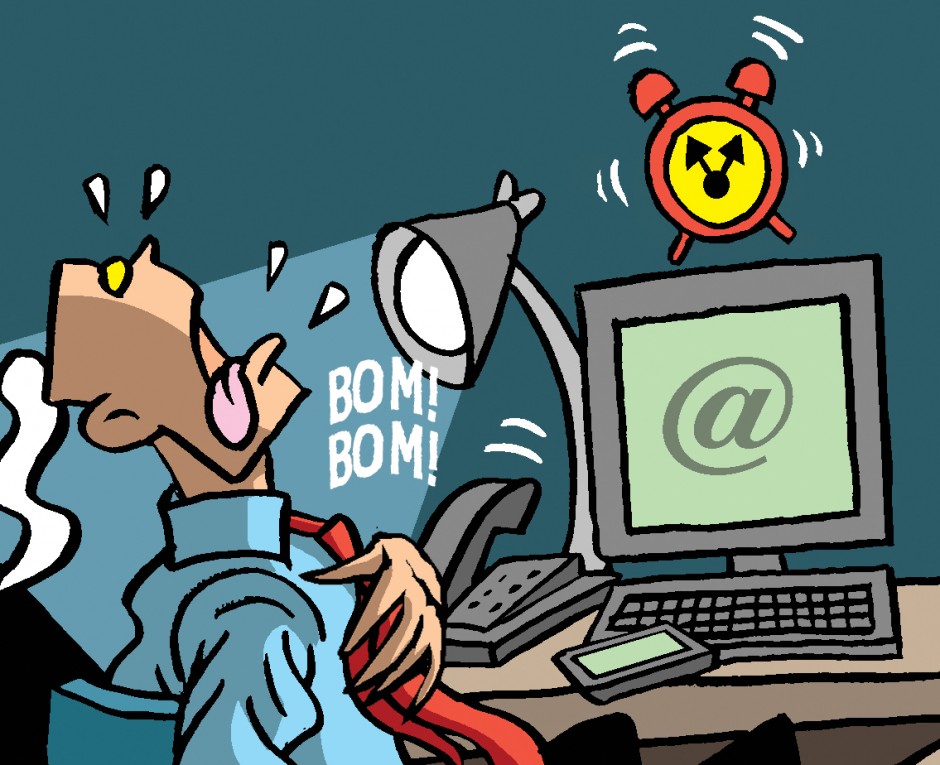4. Het risico op Karoshi
Om meerdere redenen hebben wij getwijfeld om het begrip van Karoshi in onze studies op te nemen. Bij het identificeren van de chronische stressfactoren leek het ons echter toch nuttig om de factoren die kunnen leiden tot dit type uitputting te integreren. Het gaat over lange periodes met te lange werktijden, een te korte en te verstoorde slaap, factoren die leiden tot ernstige gezondheidsproblemen met soms de dood tot gevolg: hoge bloeddruk en hersenbloedingen, hartaanvallen, … Uiteindelijk werd de definitie van het ministerie van Japan bewerkt en geïntegreerd.
Illustratie : Nicolas Vadot – © Preventing Burnout.eu
Bronnen:
Bibliography retrieved from Karoshi – smrt z přepracování. PhDr. Z. Židková
Clay R.A.: “Lean Production” May Also Be a Lean Toward Injuries. American Psychological Association, Monitor Online.Volume 30, Number 5 May 1999
Death from Overwork Reaches All-time high.Foreign Press Center. Japan. June 18, 2003
Haratani T.: Karoshi – death from overwork. ILO Encyclopedia – http://www.ilocis.org/sample1.html
Kato T. Political Economy Of Japanese Karoshi. Democracy, Economy and the Workplace.
Other references
Japan Labor Bulletin, Vol.41 – No 2, February 1, 2002
IZA Discussion Paper No. 8129 April 2014 ABSTRACT. The Productivity of Working Hours. Observations on munition workers, most of them women, are organized to examine the relationship between their output and their working hours. The relationship is nonlinear: below an hours threshold, output is proportional to hours; above a threshold, output rises at a decreasing rate as hours increase. Implications of these results for the estimation of labor supply functions are taken up. The findings also link up with current research on the effects of long working hours on accidents and injuries. ( Recherches scientifiques – bibliography)
The Lancet: Long working hours and risk of coronary heart disease and stroke: a systematic review and meta-analysis of published and unpublished data for 603 838 individuals – http://www.thelancet.com/journals/lancet/article/PIIS0140-6736%2815%2960295-1/fulltext
